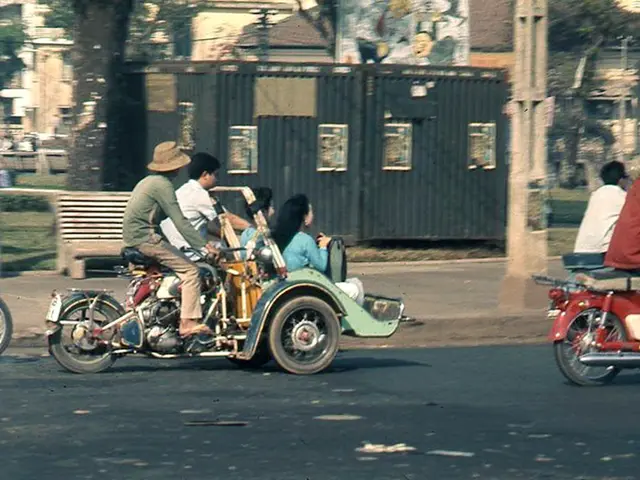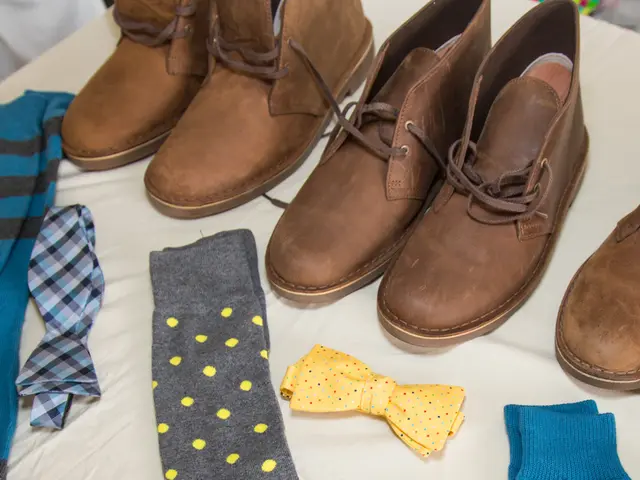Ideal Timing for Tomato Seedling Transplant: Complete Tutorial
Growing Your Own Tomatoes: A Step-by-Step Guide
Harvest season is here, and nothing beats the pleasure of biting into a plump, juicy tomato fresh from your own garden. If you're planning to cultivate tomatoes in your backyard, there are several ways to kickstart the process, whether you opt for seeds or seedlings. We spoke to two gardening experts to get their tips on when to start seeds indoors, the importance of hardening off, and when to transport the little tomato plants into their permanent home.
When to Sow Seeds Indoors
Tomatoes thrive in warm weather and require ample sunlight to grow and produce fruit. If you prefer growing tomatoes from seeds, you can start them indoors approximately two months before planting time. To determine the right sowing time, remember to consider your area's last frost date. "For a successful tomato harvest, we plant our tomato seeds six to eight weeks before the last frost in the spring," suggests Greg Key, founder of Hoss Tools. Knowing your region's frost dates is essential to get your seeds blooming in time.
To find the ideal tomato variety for your area, remember that not all seed options are suitable for all climates. "When selecting tomato varieties, make sure you purchase seeds that are known to thrive in your region," advises Key.
Give Your Seeds the Best Chance for Germination
Heading to your local nursery to buy seedlings can save time and effort. But there's something satisfying about growing tomatoes from seeds and being a part of the entire process – from seed to fruit. To increase your chances of successfully germinating seeds, consider the right sowing medium, seed depth, and watering techniques. Key recommends using a good seed-starting mix and covering seeds with perlite for improved aeration and humidity around the seeds.
It's also essential to keep the temperature and humidity at optimal levels for seed germination. A steady, warm environment (around 80-85°F) with adequate moisture will help encourage seedling emergence. To increase humidity during the first few days, consider wrapping the seed tray in plastic wrap for 24 hours.
Recognizing When Seedlings are Ready for Transplant
Post-germination, your seedlings will continue growing into tiny, delicate plants, and it's crucial to know when they're ready for transplanting. According to Key, a well-rooted seedling can be safely transplanted when it can be gently pulled from the seed tray with its soil intact.
The Hardening Off Process: Acclimating Plants for the Outdoors
Indoor-grown tomato seedlings need to adapt to outdoor conditions before transplanting, which is known as hardening off. This process gradually exposes seedlings to outdoor elements, helping them toughen up and better handle the elements once they're living outside full-time. "Hardening off is essential because you're essentially preparing the plants for the outdoors, building their resilience more and more each day," explains Bailey Van Tassel, author of "Kitchen Garden Living" and host of The Garden Culture Podcast.
Begin hardening off your tomato seedlings a couple of weeks before your area's average last frost date. Start by placing them outside for a couple of hours per day in a protected area, such as a covered porch. Gradually increase their exposure to sunlight and wind over the next two weeks, according to the North Carolina Cooperative Extension. As the plants become more accustomed to outdoor conditions, they'll be better equipped to handle weather changes after transplanting.
Remember that it's essential to pay attention to the temperature during the hardening off process. Place your seedlings outside only when temperatures are consistently above 45°F, and nighttime temperatures are at least 55°F to prevent cold damage.
Transplanting Your Tomato Seedlings
Once your seedlings have been hardened off and your region's last frost date has passed, it's time for the big move! Transplant your tomato seedlings into their permanent garden spots. To encourage strong root growth, plant them deeper than the soil level in their pots – up to the first set of true leaves.
Always plant during a cloudy day to minimize shock to the seedlings. Keep in mind that tomatoes love warm weather, so try to wait until the hottest part of the summer to transplant your seedlings to give them the best growing conditions.
Elemental as it may seem, learning the art of growing tomatoes from seed to harvest is a rewarding experience – and you'll enjoy savoring the fruits (and veggies) of your labor for months to come!
- For a successful tomato harvest, consider starting tomato seeds indoors approximately two months before the last frost in spring, since tomatoes thrive in warm weather and require ample sunlight.
- To increase the chances of successfully germinating tomato seeds, use a good seed-starting mix and cover the seeds with perlite for improved aeration and humidity around the seeds.
- To determine the ideal tomato variety for your area, ensure you purchase seeds that are known to thrive in your region when selecting tomato varieties.
- Post-germination, a well-rooted seedling can be safely transplanted when it can be gently pulled from the seed tray with its soil intact.
- Hardening off your tomato seedlings is essential before transplanting as it gradually exposes them to outdoor elements, helping them toughen up and better handle the elements once they're living outside full-time.







